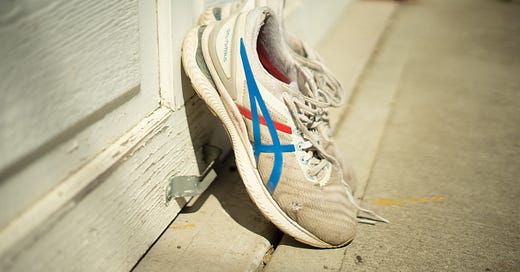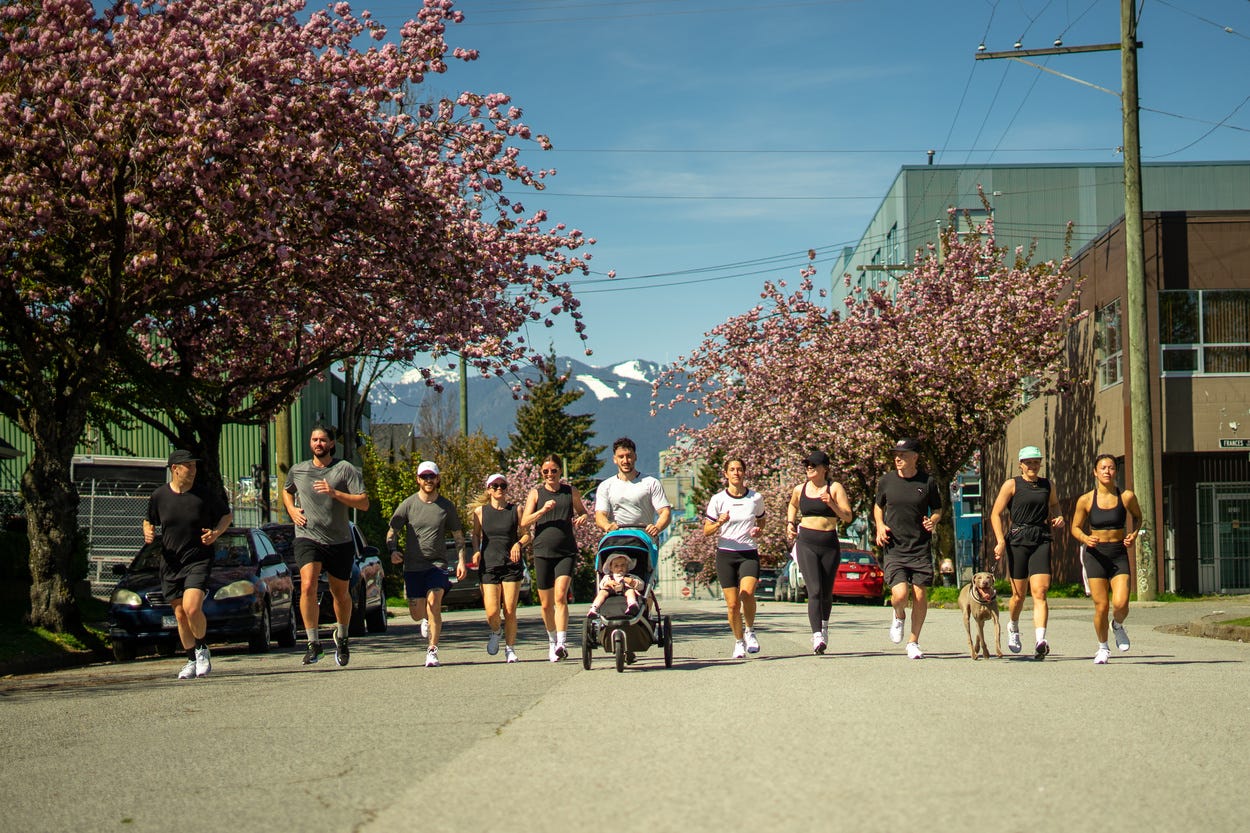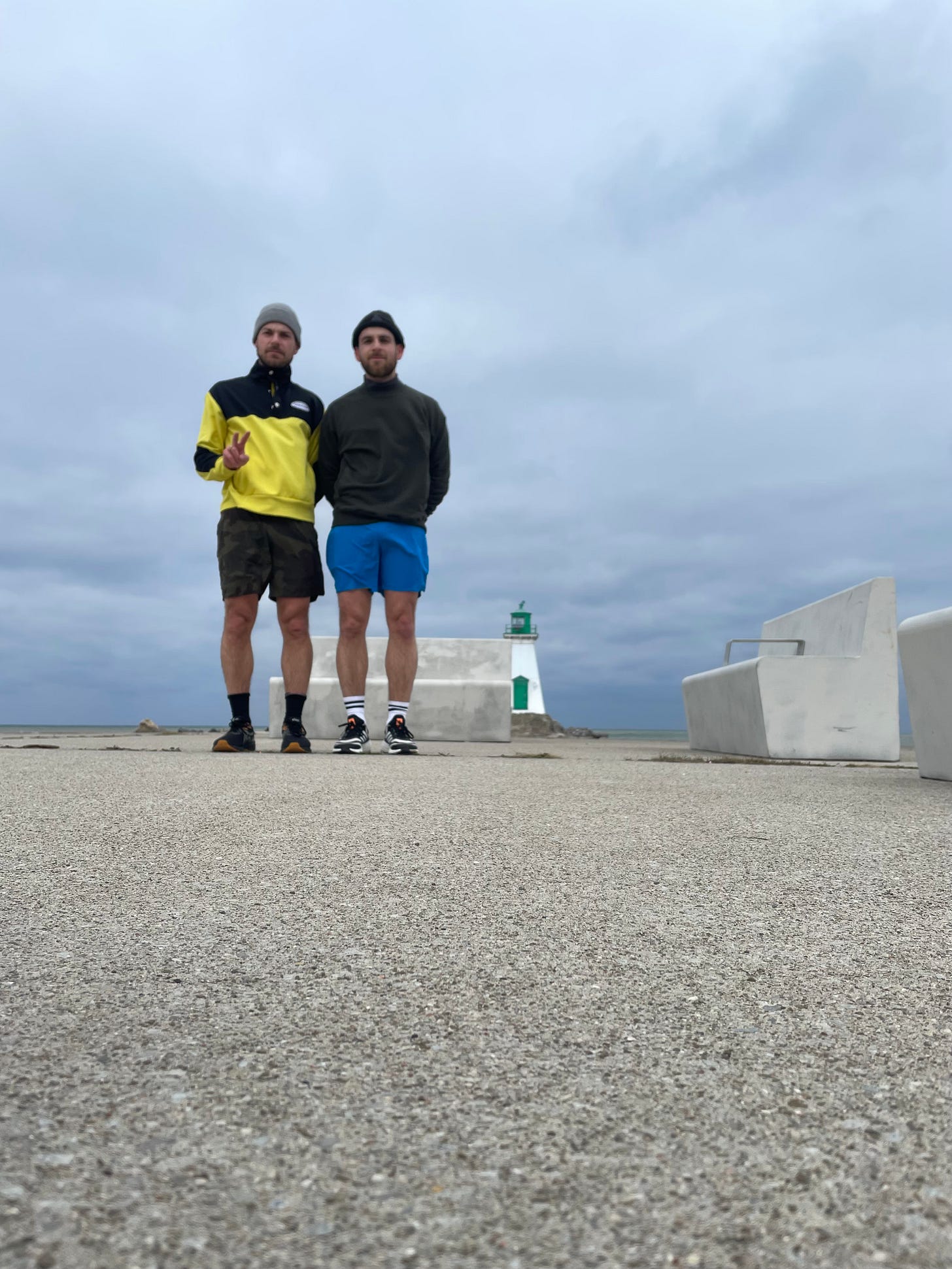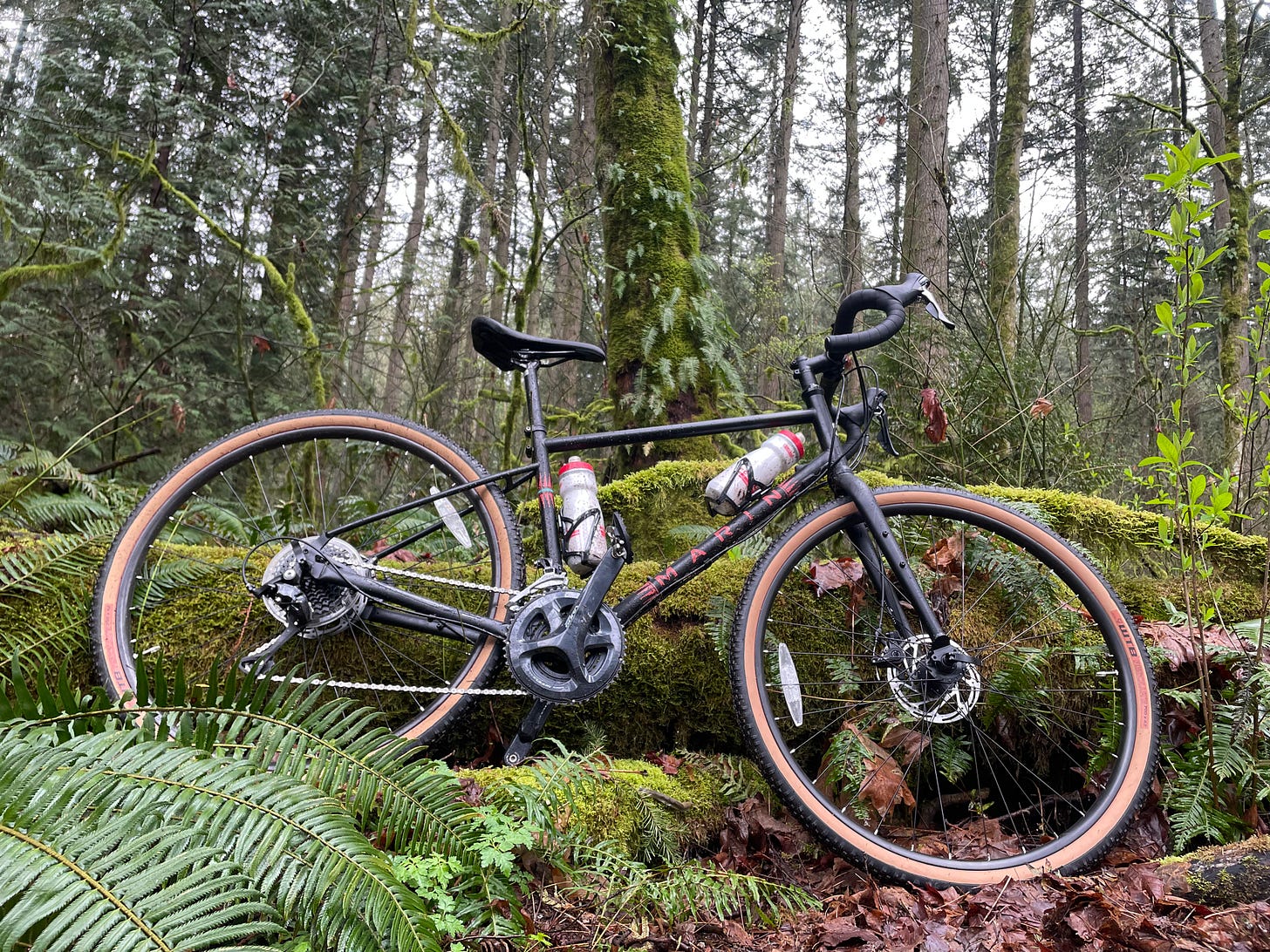I am currently in the process of recovering from a running injury which ended up being way more serious than I first thought. The purpose of sharing this writing is to hopefully help educate and provide resources for people struggling with similar injuries as I have done a bunch of research to get back to the point where I can run again.
Introduction
If you have been following some of my projects lately, you may recall that I posted an article on my website called “Thank you for the Run (club)”, in which I cover some of my personal history with running. I had the opportunity to demo some new Puma trainers with my run club during one of our Sunday meet-ups and through that, I had the time and space to reflect on my journey with running up until that point which led to that reflective piece. The TL; DR of that article is essentially I was not a huge fan of running, but had really fallen in love with it over the past couple of years, for multiple reasons. If you are interested in some further background, and how I found to enjoy running, I encourage you to follow the link above.
In January last year, on a whim, I ran a half-marathon. Despite being sore for weeks after my previous attempt at this distance, I felt unexpectedly confident around the 10-15km mark and decided to push myself. To my surprise, I completed the 23km run and still had enough energy to walk around the neighborhood that same afternoon. A testament to the progress I had been making at the end of 2022.
This experience spurred me to continue running half marathons (HM) every month, sometimes alone and sometimes with friends, and even participating in a race. While I hadn't planned to maintain this streak for the entire year, my rapid progress and enjoyment of the challenge led me to continue.
As the year progressed, I kept feeling good and finding opportunities to run. This was a massive leap, considering the year prior (2022) I had only run a total of 547km and in 2023 I ran almost 1400km, essentially tripling my total kilometers.
As I was increasing my distance, I had been aware of the fact that a general training guideline in running is the 10% rule: “Here the guidance suggests increasing distance no more than 10 percent more than the previous week. For example, if you're running 10 kilometres this week, next week add one more kilometre to that total.” Although I was not increasing too dramatically over the year, I had started to add on quite a bit of kilometers, and running consistently during the week, I will explore this a bit more in the next section. I tend to be the type of person that gets obsessed with new challenges, and running kept presenting me rewards for overcoming challenges, so I kept pushing.
When November and December finally rolled around; I had completed a HM each month, and I only had two big runs left to complete the streak, but, signs that cracks in the foundation I thought I had built were starting to form.
The Lead Up
A metaphor I often think about related to what I am trying to achieve with my running is the “pyramid” structure, known as “Base” training. Essentially looking at training in order to build a “wider you base”, so you can “reach a higher peak” and building your week plans around that. Training at the “base” was what I mostly focused on in the beginning phases (slow, low heart-rate, building a capacity for long distance) and I was able to see great improvements as running felt easier and I was getting faster at a lower heart-rate. Pushing myself too often and too hard when I was younger is what led me to fall out of love with running and I was aiming to avoid that this time around…
Towards the end of 2023, although I had built a substantial base in the earlier half of the year, with work starting again, my consistency had started to drop, leading to tougher feeling long runs. On top of this, there were also hints of “over-training” creeping in, as I started to feel lethargic on longer runs. This made sense considering I had more than doubled my previous years work load within the first 6 months of the year.
After completing a HM a month, despite treading into the “over-training” territory at the end of the year, I decided to take a few weeks off after my December HM as at the end of the year, I was visiting my brother (and entire family) in Ontario.
We were not initially planning on doing much running, in past years there was too much snow, or was often far too cold to get any longer runs in during the winter break. But, him being my original inspiration to get into running, and an uncharacteristically warm and dry spell in Ontario (thanks, but no thanks, climate change…), we were able to run almost every other day. This is where some minor running mistakes started to add up.
Minor Running Mistakes Over the break:
I probably shouldn’t have been running as much as I was, given I was already feeling over-trained.
I did not pack the proper shoes as I thought we’d be running in slush, or not at all.
I should have been hydrating and eating better, given the amount of activity we were doing.
Within the first few days of me being home, we had gone on a bunch of pace-y long runs and were both feeling great, it was an opportunity to spend time together, and be active during a time of year where we are typically stuck indoors.
Then it happened…
After a few long runs, we started to step the pace up on our last few kilometers. For some reason, I was feeling extra good one day and decided to sprint the last 250m or so.
Leading up to this, I had been feeling a slight strain in my shin, but nothing notable, and I just figured it was a regular little niggle you sometimes get. Turns out, it was likely the basis for something far more nefarious.
The Injury
I got home that day and definitely felt a bit of a strain in my shin, again, nothing to be concerned about for the first couple hours after the run. And then it hit me. I was carrying my toddler down the stairs at my in-laws, and on the final step, I felt it. A sharp pain radiated through the inside of my shin. As I continued to walk, I could feel it with every step. Shit.
My immediate plan was to just keep moving it. I’ve had ankle, wrist, and finger sprains through the years and I’ve always felt keeping it mobile and lubricated works best for me, so I figured if this was a similar strain, it would react in a similar way.
A couple days passed and I could still feel this pain, especially climbing stairs. Walking around didn’t really hurt, unless there was a gradiant or I was turning in a certain way.
I had consulted a few friends and family who are runners and everyone defaulted to the same condition. “Shin Splints”. So I started to do research, but initially I thought the worst, this could likely be a stress fracture, based on one or two tests I was doing at home.
A lot of the “key indictors” that point to a shin splint were present, but there were a few that weren’t, such as the pain decreasing as I “warmed up”, or pain spread across the shin and calf. This was much more localized, and got worse through the day.
This is where my first BIG MISTAKE really was. Within doing reading and research, I felt like this maybe wasn’t shin splints, but I a) wanted it to be, and was generally told that b) it was likely was. The other option was a stress fracture. This would mean weeks off running, which I would have liked to avoid.
One of the only ways to tell if it is indeed a stress fracture vs. a shin splint is an MRI or X-ray to see if there are tiny cracks in the bone, as opposed to a muscular injury which causes a shin splint. I didn’t have the interest in trying to schedule imaging knowing that by the time I got in to a doctor, and then into imaging, I would likely be healed anyways. I kept researching and doing some self assessments. I kept convincing myself it was shin splints, so that I could keep running, knowing if I just warmed-up properly, hydrated, and did some at-home physio, I could recover quickly. I was intending to run the First Half in Vancouver at the end of February.
And here it is Mistake #1, I did not listen to myself and my original hypothesis. Deep inside, I knew it wasn’t shin splints. As I ran my fingers across my shin, or did rolling or physio exercises, I was not feeling relief as I read I might, I was feeling more pain, and localized pain. My own hubris though, was telling me, if it was shin splints, I could work my way out of it. I had been improving on my weights and mobility and with a bit more work, I’d strengthen the shin splints away. And now, that sounds silly to write. Of course it wasn’t shin splints, I had been working so hard at strengthening and mobility, that a muscle injury at this point made little to no sense.
After a couple weeks off, I decided I would try to run again, telling myself, it was shin splints, after the first few km’s, it would feel better and I could continue on.
And there is Mistake #2. As I stepped out of the house and my shin actually didn’t feel that bad, within the first one or two kilometers, it happened, the pain was back and it happened with every step. This was the exact opposite of what I read would happen with shin splints. I stubbornly, kept running. Finishing a few 5km runs in the weeks leading up to the first half. I definitely should not have been running.
The day before the First Half race, I went for one more “shake-out” run, thinking maybe I would feel fine enough to run a slow half marathon the day after. Instead, I got about 3km into my run and decided to walk home. Defeated, and knowing for sure this was not shin splints, I immediately knew I wouldn’t be running again for the next little while.
This ended up being a classic case of a stress fracture. And in hindsight, of course it was. It has all the elements of what leads to a stress fracture, and, at the time, had all of the pain indications of one as well.
It was at this point that I started my road to recovery. I want to be able to run again, and I want to be able to run longer than I ever have, so in order to get there, I needed to take a substantial amount of time off, and within that time, continue to strengthen and do cardio, but completely stop running.
Luckily this time around, I did not make the mistake of coming back too quick or too heavy, and it my recovery is mainly attributed to the following resources that I will share that helped me get there.
The Recovery Plan
Once I decided to stop running, I quickly started to consume all the information I possibly could about what causes stress fractures, how to return from a stress fracture, and how to strengthen and maintain my fitness in the meantime. Not only did it help me cope with not being able to run, but it gave me the confidence that taking the time off was not only necessary, but would allow me to fix some of the weaknesses I had, and still be able to maintain some level of fitness.
If you’ve ever stopped running for any period of time, you know that starting again is a tough hill to climb, but having some goals and programs during the time off can help your mind stay busy while you are unable to be running.
Here is a list of resources I used to learn and grow from my mistakes.
Stress Fracture Videos
These videos helped guide me in terms of understanding my injury, while also giving me insights into some of the things that could have caused it in the first place.
It turned out, the two main culprits in my estimation were; over use, and not bringing the proper shoes home for the distance I was running.
The first video here allowed me to diagnose my injury and initially I watched this video within the first couple days of the injury, which led me to believe it might have been the fracture (even though I mentally fought it for a while)…
How to Tell the Difference between SHIN SPLINTS or STRESS FRACTURE?
The next two videos are by Nathan Carlson and he does a great job explaining the biomechanics of the tibia, how it affects runners, some more diagnosis, and then some treatment plans.
Tibial Stress Fracture | Causes, Diagnosis, and Treatment
This last video is a more practical outline in terms of creating a return to run plan, although I did not follow it (I will link the plan I followed below),
12 Steps to Healing and Running with a Stress Fracture
Return to run Protocol
I found this protocol online and followed it to the day.
You can find lots of different ones online, but what I appreciated about this one was the phasing of the returning to run and the emphasis on the cross-training and strengthening while not running.
Although it was a bit frustrating to see that I would not be jogging more than 10 minutes until 8 weeks after stopping running, it ended up being the best thing for my injury and I would highly recommend this protocol.
Strengthening Program and Cross Training
The one massive leg up I had in my recovery is the fact that I have been following the ATG workout program for a couple of years now, and lately they have updated the app to have a full weight program as well.
If you are not familiar with the ATG program, I would highly recommend checking it out if you have any knee pain. My entire athletic life has been plagued by knee pain, starting from when I was very young (12ish). Since integrating the ATG programs for the past couple of years, I’ve seen massive improvements in the strength, mobility, and stability of my knees. I would highly recommend doing their Zero program first, and then moving into some of the other weighted programs. This app and “personal online training” is definitely worth the money, and once you do it for long enough, you can adapt and change the program to suit your needs.
The final thing I did during the first eight weeks was buy an entry level indoor trainer for my bike. This was not something I thought I’d enjoy originally, but being stuck indoors at home at night, or watching the baby monitor during the rainy afternoons in the winter, gave me time to sit on the bike and “ride” for an hour or so. Integrating the Zwift online program also allowed my mind to stay busy and engaged while on a stationary bike. Any type of cross training during this time will do, so if you find yourself in a similar situation, I strongly recommend indoor and outdoor cycling, or swimming, as a low impact alternative to running while you recover.
Final Reflections
I am now at the final phase of the recovery program. Slowly starting to integrate 20-30 minute runs into my weekly routines. At this point I feel I’ve grown a lot, mentally. If I would have gotten this injury a few years ago, I likely would have stubbornly continued to run through it, only to make things worse. I am glad I am at the point where I could listen to my body and take the time needed to fully recover, and although it was hard to see my friends and family continue to run, I knew if I took the right steps, I would be back sooner rather than later.
On my first 5 km back, I could barely keep my heart-rate down, my legs felt like bricks, and my cadence and form felt all over the place, but, at the end of the day, I was running pain-free, so I was filled with gratitude.
Despite thinking I have built a base that would allow me to get right back to it, and continued to do cross training and strength work, it feels like I am starting over, but I am okay with that right now. I know if I can continue to pace myself, stay disciplined in my return, and stay committed to my strength and mobility training, the recovery will be swift.
My biggest focus now will be not over-doing it. The goal is longevity. Average pace, long distances, Strava badges; those all are going to have to wait. Just being able to run, and run consistently, will be the goal for the next few months.
Thanks for reading. This article is definitely a departure from what I normally share in this outlet, but that was always the point of starting this Substack to begin with. I have a few more “departure” type articles in mind, I may even need to open up one more section on this site.
If you know anyone who is injured and needs a lift, or if you are part of any running communities who you think would enjoy reading, it would be great if you could share this with them!









Wish I could still do long runs but currently limited to around 5km a week. No ego!
I've lost my running mojo for sure; this inspires me to get back into it (after my ankle sprain heals!!)